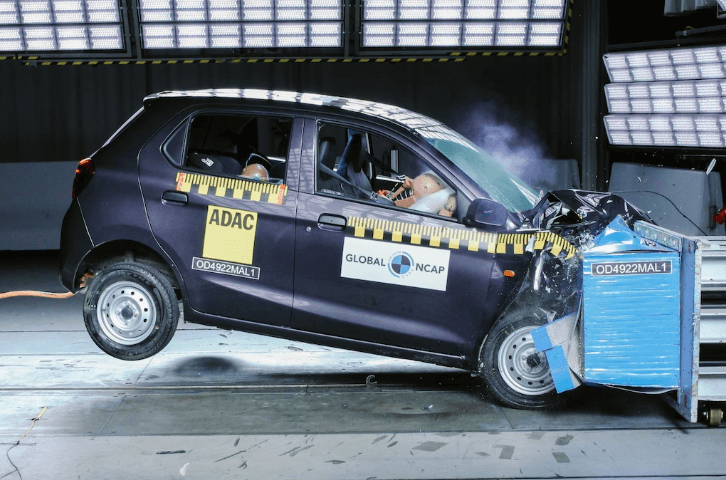Navigating the bustling roads of New Zealand requires more than good driving skills; it also demands a safe vehicle. Car safety ratings are critical for drivers who value their safety and that of their passengers. In this comprehensive guide, we’ll delve into the intricacies of the vehicle rating system in New Zealand, discuss the importance of car safety, and offer key insights to help you make informed decisions about your vehicle.
Whether you’re a car enthusiast with an eye for detail, a resident looking to buy a new ride, or a safety-conscious driver, understanding these ratings will empower you to choose the safest car for your needs. As we explore the nuances of car safety in New Zealand, we aim to provide you with the knowledge to navigate the roads with confidence and peace of mind.
What Are Car Safety Ratings?
Before we drive into specifics, let’s define what car safety ratings are. These ratings provide consumers with an estimate of the level of safety a vehicle provides in the event of an accident and the likelihood of serious injury to occupants or other road users. In New Zealand, safety ratings are often based on data from real-world crashes and controlled safety tests.
The Vehicle Rating System in New Zealand: How It Works
New Zealand’s approach to ensuring safe car choices for its residents involves a comprehensive vehicle rating system. This system evaluates various critical factors, including but not limited to:
- Crashworthiness: This measures how well a vehicle protects its occupants in a crash.
- Crash Avoidance Technologies: Features that help prevent accidents, such as electronic stability control (ESC), autonomous emergency braking (AEB), and lane departure warning, are becoming increasingly significant in ratings.
- Safety Assist: Refers to technologies that aid a driver to avoid or reduce the severity of a crash. This includes airbags, seatbelts, and active safety features.
Key Players in Vehicle Safety Ratings
The two prominent organisations that provide car safety ratings in New Zealand are the Australasian New Car Assessment Program (ANCAP) and the Used Car Safety Ratings (UCSR) as part of the Vehicle Safety Risk Rating (VSRR) system managed by the New Zealand Transport Agency (NZTA).

The Importance of Car Safety Ratings
Safety ratings are more than just numbers. They can be life-saving. Vehicles with high safety ratings have shown to significantly reduce the risk of fatalities and serious injuries in road accidents. By opting for a car with a superior safety rating, you’re investing in your and your fellow passengers’ well-being.
Making Safe Car Choices
As a prospective buyer, you have the power to prioritize safety above all. Start by:
- Checking Safety Ratings: Make it a practice to look up the ANCAP or UCSR rating before considering a vehicle purchase.
- Considering Crash Avoidance Features: Invest in a car with technologies that actively work to prevent accidents.
- Understanding Airbags and Safety Belts: Learn how these critical components contribute to safety and ensure the vehicle you choose is fully equipped with them.
Where do safety ratings come from?
Safety ratings originate from rigorous testing and thorough data analysis carried out by specialized organizations. In the context of New Zealand, ANCAP conducts a series of crash tests and assessments that simulate a variety of accident scenarios. The UCSR ratings derive from an analysis of actual accident data from millions of police reports and insurance claims. These ratings are continuously updated to reflect the latest research, technological advancements, and changes in car models and road safety regulations. By utilizing such comprehensive evaluation processes, these organizations ensure that the safety ratings provided are both accurate and reliable. This data then guides consumers in making informed decisions about vehicle safety.
What is the UCSR rating NZ?
The Used Car Safety Ratings (UCSR) are a valuable resource for drivers in New Zealand looking to purchase pre-owned vehicles. The ratings offer insights into how well vehicles, from a range of years, protect drivers and passengers in the unfortunate event of a crash. The UCSR evaluates the crash safety performance of used cars based on real-world accident data collected from New Zealand and Australia. Vehicles are assessed on their ability to protect not only those inside the car but also other road users, like cyclists and pedestrians, significantly contributing to informed vehicle purchasing decisions. The ratings are easily accessible to the public and can greatly influence a buyer’s choice by highlighting safer vehicle options in the pre-owned market.
What’s the difference between Used Car Safety Ratings and ANCAP Safety Ratings?
The primary difference between Used Car Safety Ratings (UCSR) and ANCAP Safety Ratings lies in the type of vehicles they assess and the methodology used for evaluation. ANCAP ratings are focused on the assessment of new vehicles using controlled crash tests and evaluations of safety features and technologies. These tests are conducted in a lab setting and are designed to assess the vehicle’s ability to protect its occupants in various crash scenarios.
In contrast, UCSR ratings are derived from analyzing real-world crash data involving pre-owned vehicles that have been on the road. This analysis provides historical information about how these vehicles have actually protected occupants during accidents. UCSR is particularly useful for potential buyers in the pre-owned car market, as it reflects the safety performance of vehicles over time, including aspects such as wear and tear that can affect safety.
To summarize, while ANCAP provides safety ratings for new cars based on proactive testing, UCSR offers insight into the safety performance of used cars based on retrospective real-world accident data. Both play vital roles in guiding consumers to make safer vehicle choices, but they serve different segments of the car-buying market.
How do I check my car safety rating?
Checking your car’s safety rating is an essential step in ensuring you are driving a vehicle designed to protect you to the highest standard in the event of an accident. To check the safety rating of your car in New Zealand, you can follow these steps:
- Visit the Right Website: Go to the ANCAP website (ancap.com.au) if your car is relatively new to check its new car safety rating. If your car is older, you’ll want to refer to the UCSR section of the Rightcar website (rightcar.govt.nz) which holds safety information for used vehicles.
- Search Your Vehicle: Use the search function on the respective website to locate your car model. You can typically search by make, model, and year of the vehicle.
- Review the Ratings: Once you’ve found your car model, you’ll be able to see a detailed safety rating report. This report may include an overall star rating, scores on specific crash tests, and information on safety features.
By using these resources, you can make informed decisions about the safety of your car and consider upgrading if necessary to a vehicle with a higher safety rating.
What car brand has the highest safety rating?
Volvo is frequently recognized for having some of the highest safety ratings in the automotive industry. The brand’s commitment to safety is a cornerstone of their corporate philosophy, often leading the way in innovative safety technology and systems. Many Volvo models consistently earn top scores in both ANCAP and UCSR ratings, making them a preferred choice for consumers who prioritize safety. Volvo’s reputation for safety is built on a long history of pioneering new safety features, including the three-point seatbelt—a standard in vehicles globally today. Their vision that no one should be killed or seriously injured in a new Volvo by 2020 has pushed them to excel in safety performance and ratings year after year.
Interesting Facts About Car Safety Ratings in New Zealand
Here are some compelling points that highlight the importance and impact of vehicle safety ratings in New Zealand:
- New Zealand has stringent criteria for awarding safety stars, ensuring that only cars with top-tier safety make the cut.
- The introduction and consistent updating of the VSRR system show New Zealand’s commitment to reducing road harm.
- Modern vehicles’ advanced safety features are gradually shifting the ratings scale, making it tougher for cars to earn high marks without state-of-the-art protection technology—an incentive for manufacturers to prioritize safety.
Conclusion: Safety as a Driving Force
In New Zealand, where every journey through the breathtaking landscapes should be as safe as it is enjoyable, understanding and utilizing car safety ratings is paramount. By educating yourself about the vehicle rating system and making informed decisions based on these ratings, you contribute to safer roads for everyone.
Embrace safety as your co-pilot on New Zealand’s roads, and drive with the assurance that you’re in one of the safest vehicles available. No matter where your adventures take you, remember that your choice in car safety can make all the difference—secure your journey with knowledge and foresight.





